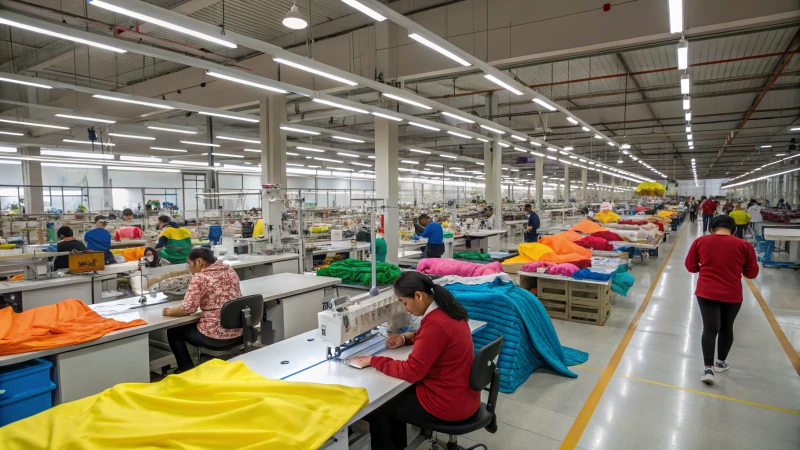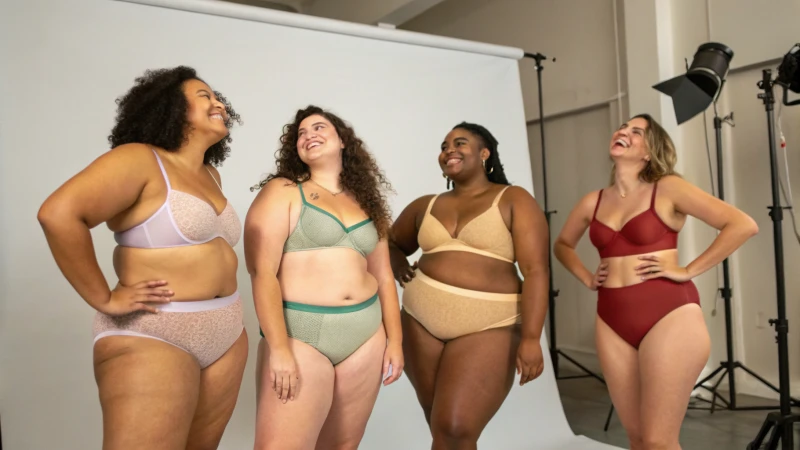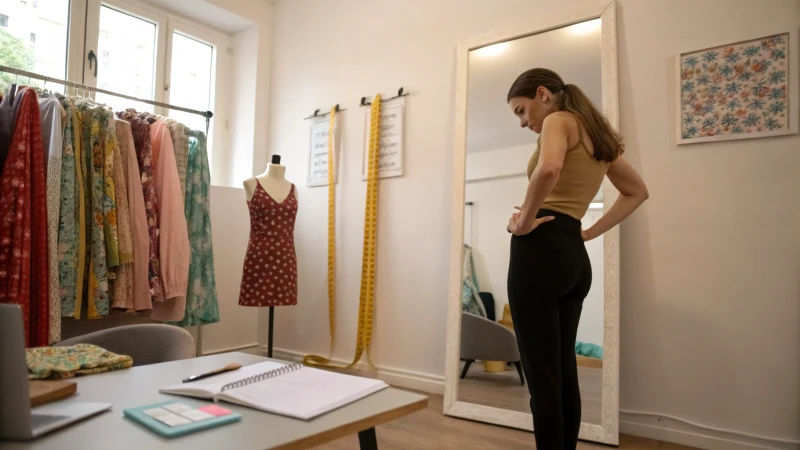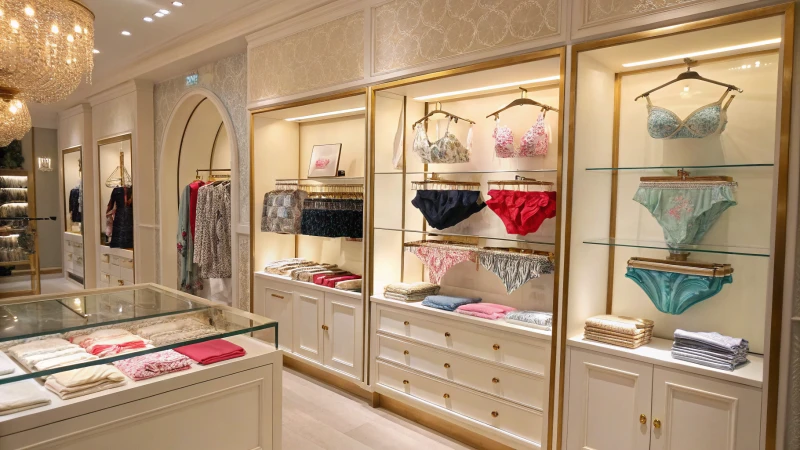
Have you ever wondered why men’s underwear isn't called 'panties'? It’s a fascinating topic that touches on history, culture, and even our perceptions of gender.
Male underwear is not called "panties" due to historical and cultural distinctions in fashion terminology. The term "panty" has its roots in "pantaloon," which was historically linked to women's garments, while terms like "briefs" and "boxers" evolved for men's styles.
While the initial answer lies in history and culture, understanding the deeper nuances involves examining language evolution, marketing strategies, and societal norms. Let's delve into how these elements have shaped current perceptions and terminologies.
'Panties' is a term originally used for men's underwear.False
'Panties' historically evolved from 'pantaloon,' linked to women's garments.
What Historical Factors Influenced Underwear Terminology?
Uncover the intriguing history behind why underwear terms differ for men and women.
Historical factors influencing underwear terminology include the evolution of words like "pantaloon" and societal trends shaping gendered language in fashion.

Evolution of Terminology from the 16th Century
The term "panty" can be traced back to the 16th century, with its roots in the word "pantaloon." Originally, "pantaloon" referred to a type of loose-fitting trousers worn by men in Venice. By the 19th century, it evolved to describe women's long drawers. This historical shift highlights how clothing terminology can change over time based on fashion trends and societal norms.
During this era, men's and women's clothing began to diverge significantly, with distinct terminologies developing for each gender's attire. As men's undergarments evolved into more practical forms like "briefs" and "boxers," the term "panty" remained firmly associated with women's undergarments, reflecting broader changes in societal attitudes towards gender and dress.
The Role of Victorian Sensibilities
The Victorian period was instrumental in cementing gender-specific language in fashion. Modesty and propriety were paramount during this time, leading to more defined distinctions between men's and women's clothing. The terminology used for undergarments was heavily influenced by these societal expectations. Women's undergarments became more elaborate and decorative, leading to the adoption of feminine terms like "panty," which conveyed delicacy and decorum.
Men’s undergarments, on the other hand, were designed with practicality in mind, fostering the use of more straightforward and less ornate terms such as "underwear" or "drawers." These linguistic choices reinforced societal norms about masculinity and femininity.
Industrialization and Mass Production
The Industrial Revolution brought about significant changes in clothing production, leading to the mass manufacturing of garments. This shift allowed for more standardized sizing and styles, which also affected terminology. With the rise of department stores and mail-order catalogs, marketing strategies began to influence clothing terms. To appeal to women, companies utilized feminine language like "panty," while targeting men with robust-sounding names like "briefs."
These terms were not just about describing the product; they were part of a broader narrative that aimed to sell an idealized version of gender roles through fashion. By examining historical advertising trends1, we can see how language played a crucial role in shaping consumer perceptions and preferences.
Influence of Modern Feminism
In recent years, movements advocating for gender equality have questioned traditional gendered language in fashion. The term "panty" has seen less rigid applications as some brands embrace more inclusive approaches. This evolution challenges historical conventions and reflects ongoing shifts in cultural perceptions regarding gender and identity.
As society continues to evolve, so too does the language we use to describe clothing. Understanding these historical influences helps us appreciate the complexities of terminology and the social factors that shape it.
No claim provided.True
No explanation available.
Victorian sensibilities had no impact on underwear terminology.False
Victorian norms influenced gender-specific terms for undergarments.
How Does Gender-Specific Language Shape Fashion?
Language plays a crucial role in fashion, shaping perceptions and influencing trends.
Gender-specific language in fashion influences consumer behavior, reinforces stereotypes, and impacts brand identity. Terms like "panty" for women and "boxer" for men reflect cultural norms and marketing strategies that cater to traditional gender roles.

The Role of Language in Consumer Behavior
Language is a powerful tool that not only describes but also prescribes. In the fashion industry, words like "panties" and "briefs" are not just labels—they shape how consumers perceive products. This specific terminology often leads consumers to associate certain attributes with these garments. For instance, "panties" might evoke thoughts of delicacy and femininity, while "briefs" might suggest practicality and masculinity. This is evident in how brands position their products to appeal to different genders.
Reinforcing Gender Stereotypes
The use of gender-specific language in fashion goes beyond consumer behavior; it reinforces societal stereotypes. By labeling men's and women's clothing differently, the fashion industry perpetuates traditional gender roles. For example, women's clothing is often described with terms that suggest elegance or beauty, such as "blouse" or "gown," while men's clothing might be labeled with words that imply strength or utility, like "jacket" or "trousers." This linguistic distinction can be seen in marketing campaigns that emphasize these traits based on gender.
Impact on Brand Identity
Brands utilize gender-specific language to solidify their identity and target demographic. This can be seen in brands that market themselves as either distinctly masculine or feminine, using language as a tool to define their brand voice. Brand identity in fashion2 is crucial for standing out in a saturated market, and language plays a significant role in how a brand is perceived.
Evolution of Fashion Terminology
While traditional terms still dominate, there is a growing trend towards gender-neutral language in fashion. Some modern brands are moving away from gender-specific labels in favor of more inclusive language. This shift reflects broader societal changes towards inclusivity and diversity. Gender-neutral fashion trends3 are becoming increasingly popular as consumers seek brands that align with their values.
Overall, the interplay between language and fashion is complex and evolving, shaped by historical contexts, cultural norms, and modern social movements.
Gender-specific terms reinforce fashion stereotypes.True
No explanation available.
Brands avoid gender-specific language to target specific demographics.False
Brands often use gender-specific language to appeal to specific genders.
In What Ways Do Style and Design Influence Naming?
How do the nuances of style and design influence what we call our clothes?
Style and design significantly influence naming by reflecting the cultural, functional, and aesthetic aspects of clothing. Names often convey specific features and target demographics, shaping consumer expectations and perceptions.

The Role of Aesthetic Appeal
The aesthetic appeal of a garment plays a crucial role in its naming. For instance, lingerie4 often incorporates delicate fabrics and intricate designs, which are reflected in names like "lace" or "silk". These terms evoke a sense of luxury and femininity, directly influencing consumer perceptions and purchasing decisions.
Functionality and Design
The design and functionality of clothing often dictate its name. Consider terms like "cargo pants" or "running shoes"; these names emphasize practical features tailored to specific activities. The design elements such as pockets in cargo pants or supportive soles in running shoes highlight their intended use, which is crucial in marketing these products effectively.
| Clothing Type | Name Influences | Example Names |
|---|---|---|
| Lingerie | Fabric, style | Lace, silk |
| Sportswear | Activity-based | Running shoes |
| Formal Wear | Occasion | Evening gown |
Gender Norms and Design Variations
Names also reflect the gender-specific design elements in clothing. Historically, men's and women's clothes have distinct design features based on differing needs and body shapes. For example, the term "panties" is linked to a more feminine design, whereas "briefs" or "boxers" suggest a masculine style focused on support and practicality.
Cultural Influences on Naming
Cultural trends heavily influence fashion terminology. For example, the rise of athleisure5 reflects cultural shifts towards more casual, versatile clothing options. The term itself is a blend of "athletic" and "leisure," representing the merging of comfort with style, and showcases how cultural trends can birth new terminologies in fashion.
Understanding these dynamics helps in appreciating how deeply intertwined naming is with style and design. These influences are not just about the clothes themselves but about how they fit into broader cultural narratives.
Lingerie names often evoke luxury and femininity.True
Names like 'lace' or 'silk' suggest luxury and femininity.
Cargo pants are named for their aesthetic appeal.False
Cargo pants are named for their practical features, like pockets.
How Do Cultural Perceptions Affect Clothing Terminology?
Cultural perceptions shape how we describe and market clothing worldwide.
Cultural perceptions significantly influence clothing terminology by dictating what is deemed appropriate, fashionable, or traditional in different societies. This results in distinct terminologies reflecting local norms, values, and historical influences.

Cultural Influence on Fashion Vocabulary
Clothing terminology is deeply rooted in cultural contexts, reflecting societal values and norms. For instance, in Western cultures, terms like "jeans" and "t-shirt" are universally understood due to their widespread cultural influence. Conversely, traditional garments such as "sari"6 or "kimono" carry rich cultural connotations and histories unique to their origins.
The Role of Tradition and Heritage
Traditional clothing items often retain their original names due to their cultural significance. For example, the "dashiki"7, a colorful garment worn in West Africa, reflects the region's history and identity. Such items illustrate how cultural heritage preserves specific terminology within fashion.
Language and Social Norms
Language plays a pivotal role in shaping clothing terminology. The way garments are described can differ based on societal norms and gender roles. For instance, men's and women's clothing items often have distinct names even if they serve similar purposes, such as "slacks" for men and "leggings" for women, revealing underlying gender expectations in language.
Globalization and Fashion Language
As globalization spreads, fashion terminology is increasingly blending across cultures. However, while certain terms gain global recognition, others remain localized, maintaining their unique cultural relevance. This blend of global and local terminologies enriches the fashion lexicon, allowing for a diverse expression of identity through clothing.
In summary, cultural perceptions not only influence what we wear but also how we talk about what we wear. As societies evolve, so too does the language of fashion, reflecting the dynamic interplay between culture and terminology.
Jeans and t-shirts have universal cultural significance.True
In Western cultures, jeans and t-shirts are widely recognized due to cultural influence.
Traditional garments often lose their original names.False
Traditional clothing items usually retain their names due to cultural significance.
Conclusion
Understanding why male underwear isn’t termed 'panties' reveals much about our societal norms and language. Reflect on these insights next time you shop for undergarments or discuss fashion terms.
Explore how advertising has shaped fashion terminology over time.: Across the country, people were sending in their orders for men's suits and hats; ladies' skirts and “waists,” or blouses; “bust forms,” which ... ↩
Understand how language helps brands connect with their target audience.: Through a study of luxury fashion accessories, Liu et al. (2012) confirmed that personality congruity positively influences consumer loyalty ... ↩
Explore modern shifts towards inclusivity in fashion terminology.: From oversized silhouettes to tailored suits, gender-neutral clothing draws inspiration from both traditional menswear and womenswear, creating ... ↩
Explore how aesthetic choices shape lingerie naming conventions.: Lingerie is more than just intimate apparel–it's a blend of art and fashion. Its aesthetic appeal is defined by key elements such as lace, silk, and delicate ... ↩
Learn about how culture shapes athleisure fashion terminology.: In addition to technological advancements, changing societal norms and cultural shifts have influenced the trajectory of the sportswear market. ↩
Explore the rich history and symbolism of the sari in Indian culture.: South Asian women have draped themselves in colorful silks and cottons for eons. The ways they're made and worn are dazzling and diverse. ↩
Understand the dashiki's cultural significance and historical roots in West Africa.: African Americans adopted the article as a means of rejecting Western cultural norms. This is when the dashiki moved beyond style and ... ↩






